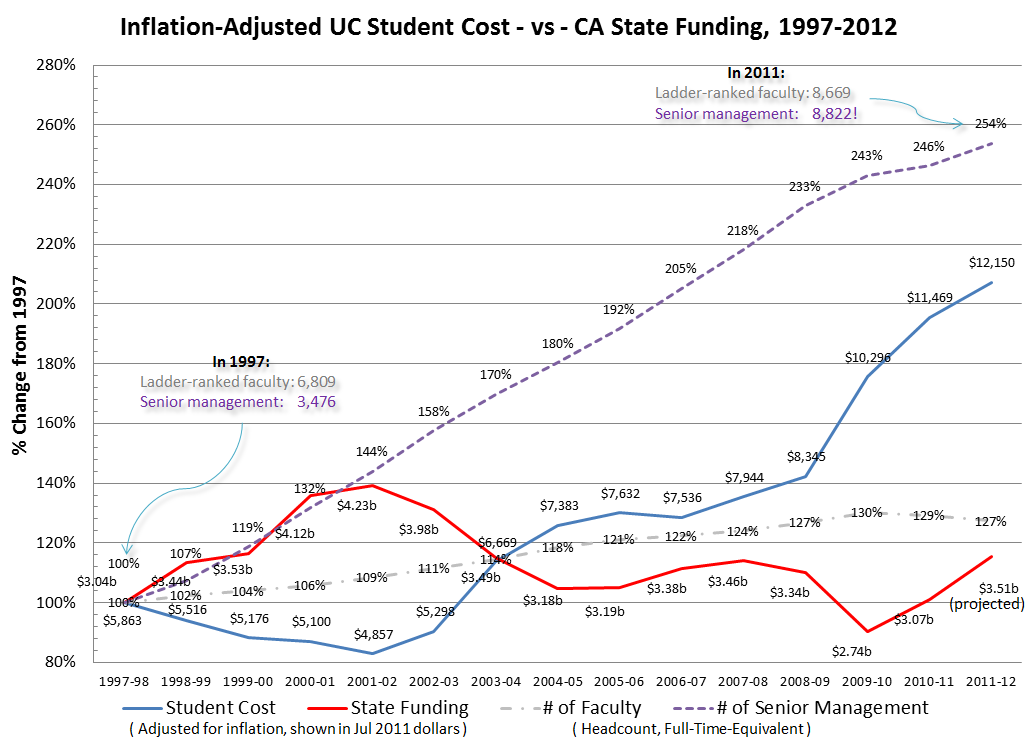An earlier version of this article appeared at the Delta Initiative website
There is a full-court press in the media regarding the California budget crisis and its likely impact on higher education. The most recent entry is in the New York Times.
Class sizes have increased, courses have been cut and tuition has been raised — repeatedly. Fewer colleges are offering summer classes. Administrators rely increasingly on higher tuition from out-of-staters. And there are signs it could get worse: If a tax increase proposed by Gov. Jerry Brown is not approved this year, officials say they will be forced to consider draconian cuts like eliminating entire schools or programs.
While I’m not arguing the point that there is a crisis, I do think it is worth looking at historical trends to get perspective. Consider the following chart from the California Review (blog post here). It looks at inflation-adjusted budget numbers and faculty and senior management headcount from 1997 – 2011. [Click to expand]
It is remarkable to see the one consistent area of growth – every year since 1997 – is senior management headcount. In good times or bad, administrative overhead through senior management grows at a consistent pace.
It is also remarkable to put the article and the chart together, and understand that students and their families are paying more and more (53% increase in tuition in the past 5 years) for less and less value (no summer school, large class sizes, reduced course sections, reduced access to advisors).
Step out of the politics for a minute regarding the proposed tax increase, and just think of public education as a system. This is not a system that just needs a fix here or there to go back to the glory days – this is a system that is broken and needs alternative educational models. Even if the system were funded at higher levels, the data indicates that the system is becoming more inefficient over time, with the real growth coming in non-instructional expenses. As the budget crisis becomes more acute, the system places the burden more and more on the student rather than figuring out how to make the system more efficient.

Take a look at http://www.ucop.edu/budget/rbudget/201112/2011-12-budget-detail.pdf page 91 and see where all the “senior management” headcount came from. I found the graph immediately suspect when they don’t start the y axis at 0.
Michael – that is a fair point and thanks for pointing out this information, particularly that half of the non-academic growth is for teaching hospitals.
I believe the core point remains, however, that over time UC has increased overhead through senior management, and the current proposals do not fundamentally seek to make UC more efficient. The linked document comes across as much more of a sales pitch, without offering significant structural reforms to deal with the reality of budgets now and in the future. There is some very good data therein, but it misses trending information and real changes.
I truly hope for improvements to UC and that includes funding. Understand that when I say “system” in the post, I am not just picking on UC. I am pointing out the whole UC / state legislature / faculty / administration / tax base / policy combination and the end effect on students.